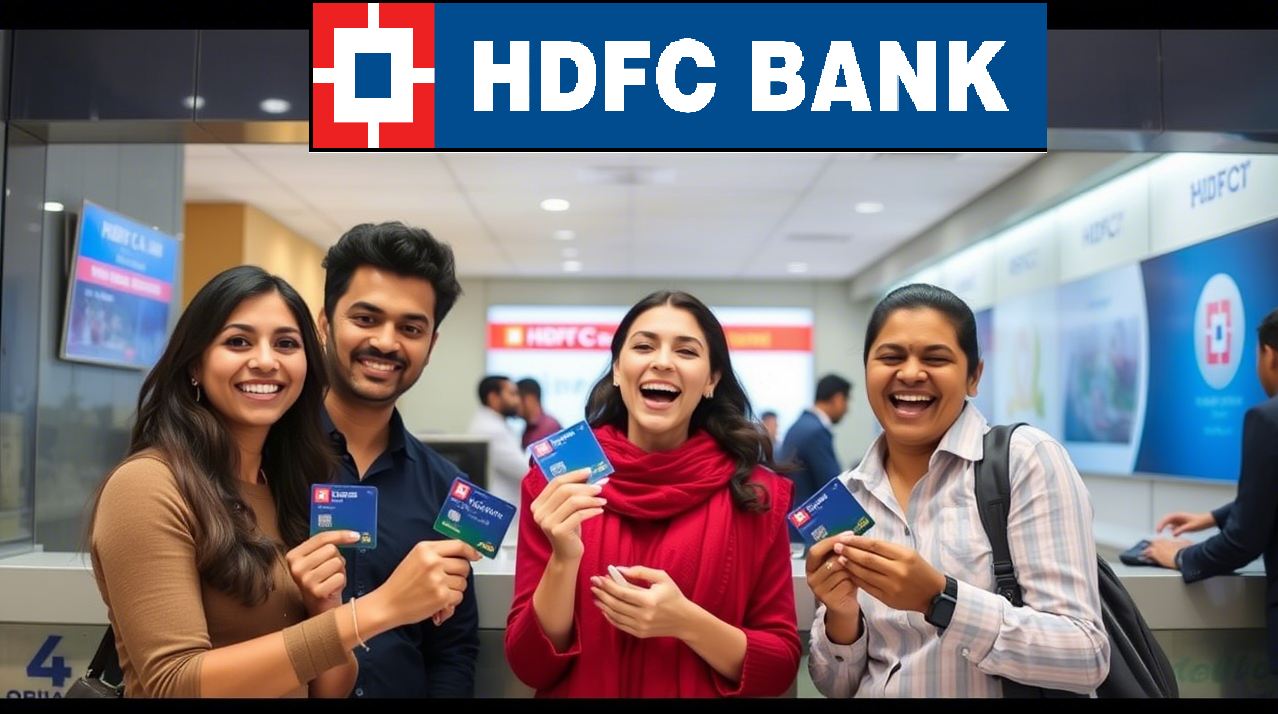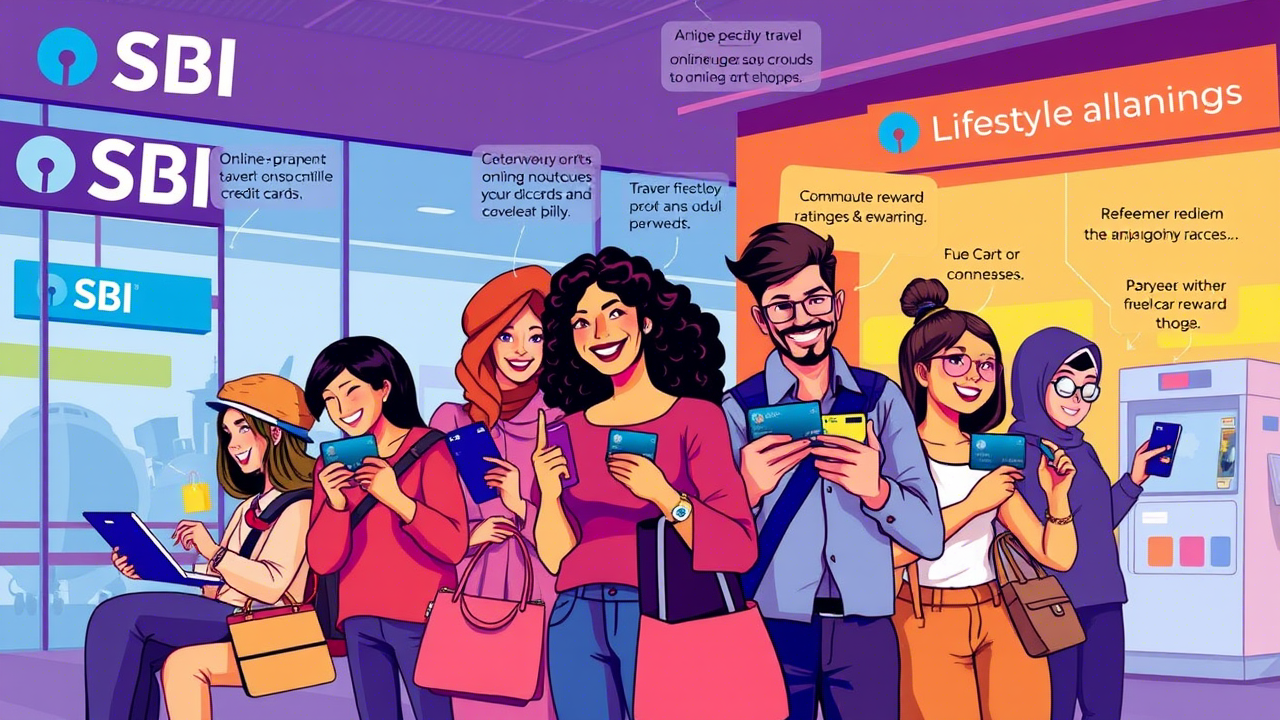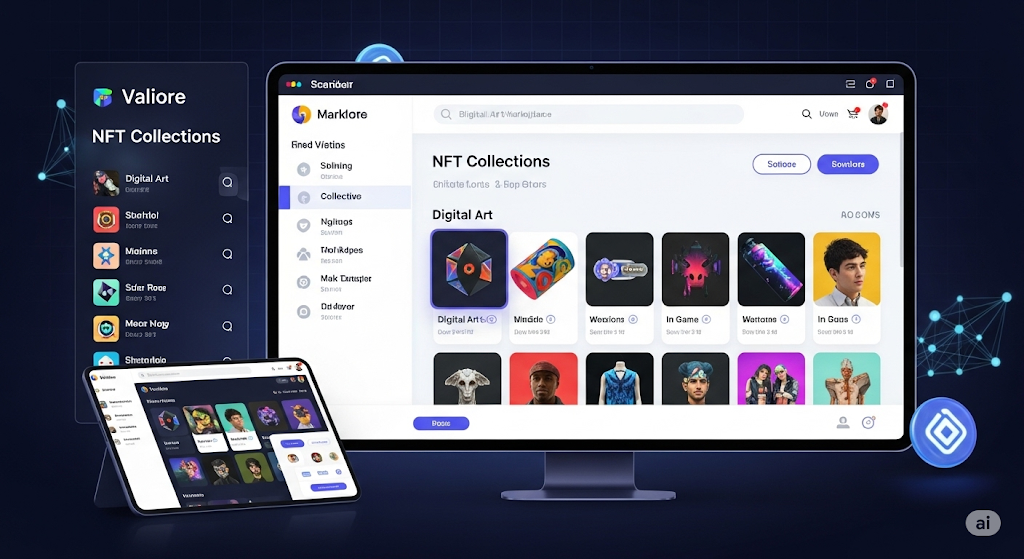In the bustling financial landscape of India in 2025, credit cards have evolved from mere payment tools into powerful instruments for maximizing value on everyday spending. Among the various reward structures available, cash back credit cards stand out for their simplicity and tangible benefits. Getting actual money back on your purchases offers a straightforward reward that resonates with many consumers. Choosing the cash back credit cards involves navigating a complex market filled with varying reward rates, annual fees, welcome bonuses, and issuer-specific perks. Understanding these nuances is key to selecting a card that truly aligns with your spending habits and financial goals.
Cash back rewards have become incredibly popular, with studies showing a significant preference for cash rewards over points or miles among Indian consumers. This preference stems from the direct value proposition – cash back feels like an immediate discount on everything you buy. However, cash back cards can vary significantly in terms of rewards, fees, and benefits. Some offer high flat rates on all spending, while others provide accelerated rewards in specific categories like groceries, fuel, or online shopping. Some entice users with generous welcome bonuses, while others focus on long-term value with no annual fees. This guide provides a comprehensive overview of the cash back credit cards available in India for 2025, helping you compare options, understand the mechanics, and ultimately choose the card that puts the most money back in your pocket.
How Cash Back Credit Cards Work
Understanding the underlying mechanics of cash back credit cards helps in evaluating different offers and maximizing the rewards earned. It’s more than just getting money back; it involves specific structures, funding mechanisms, and redemption processes.
Basic Mechanics of Cash Back Rewards
A cash back credit card essentially gives you a percentage of your spending back as a reward for using the card. For example, a card offering 1% cash back gives you ₹1 back for every ₹100 spent. This cash back typically accumulates in your account as reward points or directly as a cash balance, which you can then redeem.
Different Cash Back Structures
Cash back programs generally fall into three main categories:
- Flat-Rate Cash Back: These cards offer a consistent percentage back on all eligible purchases, regardless of the spending category. For instance, some cards provide a flat 1.5% or 2% cash back on all purchases. This structure is simple and beneficial for users whose spending is spread across various categories.
- Tiered or Bonus Category Cash Back: These cards offer a standard base cash back rate on most purchases but provide higher percentages (e.g., 3% to 5%) in specific bonus categories like groceries, dining, fuel, utilities, or online shopping. These are ideal if your spending is concentrated in the bonus categories offered.
- Rotating Category Cash Back: These cards feature bonus categories that change periodically, often quarterly. They typically offer a high cash back rate (e.g., 5%) in the active categories, up to a certain spending limit, and a lower flat rate on all other purchases. Users typically must activate or enroll in rotating bonus categories every quarter to earn enhanced cash back rewards.
Some cards may even offer hybrid models, combining elements of these structures.
How Issuers Fund Cash Back Programs
Credit card issuers fund cash back rewards primarily through interchange fees. Every time you use your credit card, the merchant pays a small percentage of the transaction amount to the card network (like Visa or Mastercard) and the issuing bank. A portion of this interchange fee is then returned to you as cash back. Annual fees charged on some cards also contribute to funding more generous reward programs and additional benefits.
Redemption Options and Flexibility
The way you can redeem your accumulated cash back varies by card issuer:
- Statement Credit: The most common option, where the cash back amount is applied directly to your credit card bill, reducing your outstanding balance.
- Direct Deposit: Some cards allow you to transfer the cash back amount directly into your linked bank account.
- Gift Cards or Vouchers: You might be able to redeem cash back for gift cards from various retailers, sometimes at a preferential rate.
- Merchandise or Travel: Some programs allow converting cash back into points that can be used for booking travel or purchasing merchandise through the issuer’s portal, though this might not always offer the best value compared to direct cash redemption.
Check the redemption thresholds (minimum amount required to redeem) and any expiration policies associated with your cash back rewards.
Cash Back vs. Points Systems Compared
While cash back offers straightforward value, points-based reward systems can sometimes offer higher potential value, especially for travel redemptions when points are transferred to airline or hotel partners. However, points systems often require more effort to maximize value and understand redemption options. Cash back is generally simpler and provides guaranteed value, making it a preferred choice for many users who prioritize ease and direct financial benefit.
Top Flat-Rate Cash Back Credit Cards
For users seeking simplicity and consistent rewards across all spending categories, flat-rate cash back cards are an excellent choice. These cards eliminate the need to track bonus categories or activation periods.
Leading Flat-Rate Options in India (2025)
- SBI Cashback Credit Card: Often cited as a top contender, this card typically offers a high flat-rate cash back (e.g., 5% on online spending, 1% offline, subject to caps and terms) often with no annual fee or a low fee structure, making it highly competitive. Check current offers on SBI Card.
- HSBC Live+ Credit Card: Known for offering competitive flat-rate rewards on various spending categories, potentially appealing to users with diverse spending patterns.
- Standard Chartered Smart Credit Card: Another solid option providing consistent cash back on everyday purchases, often bundled with introductory offers or benefits.
Comparison of Reward Rates and Annual Fees
When comparing flat-rate cards, the key factors are the cash back percentage and the annual fee. A card with a slightly lower cash back rate but no annual fee might be more valuable for moderate spenders than a card with a higher rate but a significant fee. Estimate your yearly spending to identify the card combination that delivers the highest overall cash back return.
Welcome Bonuses and Introductory Offers
Many flat-rate cards offer attractive welcome bonuses (e.g., bonus cash back after meeting a minimum spending requirement within the first few months) or introductory 0% APR periods. Factor these initial benefits into your comparison, but prioritize long-term reward value.
Additional Benefits Beyond Cash Back
Look beyond the cash back rate. Consider other perks like fuel surcharge waivers, airport lounge access (less common on basic flat-rate cards), insurance coverage, or discounts with partner merchants. Depending on your lifestyle, these perks can greatly enhance the overall value of the card.
Ideal User Profiles for Each Card
Flat-rate cards are best for individuals who:
- If you value simplicity and prefer not to monitor spending categories, a flat-rate cash back card may be ideal.
- Have diverse spending patterns not concentrated in specific bonus categories.
- Value consistent rewards on every purchase.
Best Tiered Category Cash Back Cards
Tiered or bonus category cash back cards reward users with higher percentages in specific spending areas where they spend the most. These can be highly lucrative if your spending aligns well with the card’s bonus categories.
Top Tiered Category Cards in India (2025)
- HDFC Millennia Credit Card: A popular choice offering accelerated cash back (often 5%) on key online platforms (like Amazon, Flipkart) and offline spending, with a lower base rate elsewhere. Details available at HDFC Bank.
- Amazon Pay ICICI Credit Card: Primarily targets Amazon users, offering high cash back (e.g., 5% for Prime members) on Amazon purchases and lower rates on other spending. It’s commonly offered without any joining or annual fees.
- Axis Bank ACE Credit Card: Focuses on utility bill payments, mobile recharges, and specific partners like Swiggy or Zomato, offering significant cash back (e.g., 5%) in these areas, plus a flat rate on other spends. Check Axis Bank for current details.
- Flipkart Axis Bank Credit Card: Similar to the Amazon card, offering high cash back on Flipkart and partner merchants.
Comparison of Category Reward Rates
Carefully examine which categories offer bonus rewards and the percentage offered. Common bonus categories include online shopping, groceries, dining, fuel, utilities, travel, and entertainment. Choose a card whose bonus categories match your highest spending areas.
Category Caps and Limitations
Most tiered category cards impose monthly or quarterly spending caps on the bonus categories. For example, 5% cash back might only apply up to ₹10,000 spent in that category per month, after which the base rate applies. Understand these caps to estimate realistic reward potential.
Complementary Category Combinations
Some users maximize rewards by holding multiple tiered cards that cover different spending areas. For instance, one card for online shopping and another for utilities and fuel. This requires more management but can yield higher overall cash back.
Strategies for Maximizing Tiered Rewards
To maximize rewards, consciously use the card for purchases within its bonus categories. Keep track of spending caps. If a card offers multiple bonus categories, prioritize spending in the ones with the highest reward rates.
Rotating Category Cash Back Champions
Rotating category cards offer potentially the highest cash back rates (often 5%), but only in specific categories that change every quarter. These require more active management from the user.
Leading Rotating Category Cards (Less Common in India)
While very popular internationally (e.g., Chase Freedom Flex, Discover it Cash Back), dedicated rotating category cards are less common as primary offerings from major Indian banks compared to tiered category cards. Some banks might offer promotional rotating categories on existing cards periodically.
Activation Requirements and Tracking
The key feature of rotating category cards is the need to activate or enroll in the bonus categories each quarter, usually through the bank’s website or app. Failure to activate means you’ll only earn the base cash back rate.
Historical Category Patterns
Issuers often follow predictable patterns for rotating categories (e.g., groceries in Q1, fuel in Q2, dining in Q3, online shopping in Q4), but they can change. Analyzing past trends can provide insight into upcoming bonus opportunities.
Reward Rate Comparisons
The headline rate (e.g., 5%) is attractive, but remember it only applies to specific categories for three months at a time and usually has a spending cap (e.g., on the first ₹25,000 or ₹50,000 spent per quarter). The base rate on all other spending is typically low (e.g., 1%).
Maximizing Rotating Category Rewards
Success with these cards requires diligence: activate categories promptly each quarter, track spending towards the cap, and shift spending to align with the active bonus categories whenever possible.
No Annual Fee Cash Back Options
For users who want to avoid annual charges, several excellent cash back credit cards come with no annual fee or have easily achievable fee waiver conditions.
Top No Annual Fee Cards in India (2025)
- SBI Cashback Credit Card: As mentioned, often available with no or low fees, offering strong rewards.
- Amazon Pay ICICI Credit Card: Usually comes with no joining or annual fees, particularly for Amazon Prime members.
- ICICI Bank Platinum Chip Credit Card: A simple, no-annual-fee card that provides basic rewards and benefits for life.
- IDFC First Bank Credit Cards: Many IDFC First cards are lifetime-free and offer decent reward structures, sometimes including cash back elements.
Reward Rates Compared to Fee-Based Cards
Generally, no-annual-fee cards offer slightly lower reward rates or fewer benefits compared to premium cards with fees. For moderate spenders, saving on the annual fee often outweighs the higher rewards offered by cards that charge fees.
Welcome Bonuses and Introductory Offers
No-fee cards may still offer welcome bonuses or introductory 0% APR periods, although these might be less generous than those on premium cards. Evaluate the overall value proposition.
Additional Benefits and Protections
While often basic, some no-fee cards still include useful perks like fuel surcharge waivers, basic insurance coverage, or discounts through the card network (Visa/Mastercard).
Long-Term Value Proposition
No-annual-fee cards offer excellent long-term value, as you benefit from rewards without incurring ongoing costs. They are great options for building credit history or as supplementary cards.
Premium Cash Back Credit Cards
For high spenders who can leverage enhanced benefits, premium cash back cards with annual fees can offer superior value despite the cost.
High-End Cash Back Cards in India (2025)
- HDFC Diners Club Black Credit Card: While primarily a points card, its reward structure can be effectively used for cash back equivalents, offering high earn rates and premium travel/lifestyle benefits.
- Axis Bank SELECT Credit Card: Offers accelerated rewards and significant benefits like lounge access and discounts, potentially providing strong cash back value on specific categories.
- American Express Membership Rewards® Credit Card: Known for its points program, which can be redeemed for statement credit, effectively acting as cash back, alongside premium service and benefits.
Enhanced Reward Rates and Structures
Premium cards often feature higher base reward rates, more generous bonus categories, or higher (or no) spending caps on rewards compared to no-fee options.
Premium Benefits and Protections
The annual fee often buys access to significant perks like complimentary airport lounge access (domestic and international), concierge services, comprehensive travel insurance, golf privileges, and exclusive dining offers.
Travel and Lifestyle Perks
Premium cards frequently focus on travel benefits, making them attractive for frequent flyers, even if the primary reward mechanism is cash back or points redeemable for cash.
Break-Even Analysis on Annual Fees
Before opting for a premium card, calculate the break-even point. Determine how much you need to spend (considering reward rates) and how much value you need to derive from the benefits to offset the annual fee. If your spending or benefit usage doesn’t justify the fee, a no-fee or lower-fee card might be better.
Business Cash Back Credit Cards
Businesses can also leverage cash back rewards through dedicated business credit cards designed to reward common corporate expenses.
Cash Back Options for Small Business Owners
- HDFC Bank Business Regalia Credit Card: Offers rewards on business spending, lounge access, and other benefits tailored for business owners.
- Axis Bank Business Platinum Credit Card: Designed to reward business expenses with valuable benefits and incentives.
- SBI Card ELITE Business: A premium business card with strong rewards on travel, supplies, and other business categories.
Business-Specific Spending Categories
Business cards often offer bonus rewards on categories like office supplies, software subscriptions, advertising, travel, fuel, and utility payments relevant to business operations.
Employee Card Management Features
Issuers typically provide tools for managing employee cards linked to the main business account, allowing businesses to set spending limits and track expenses efficiently.
Business-Oriented Benefits and Protections
These may include travel insurance for business trips, purchase protection for business equipment, and expense management reporting tools.
Tax Advantages of Business Cash Back Cards
Using a dedicated business credit card simplifies expense tracking for tax purposes. While cash back rewards themselves are generally not considered taxable income (more like rebates), consult with a tax advisor like those found at PaisaGyaan.com website for specific guidance.
Cash Back Cards with Best Welcome Bonuses
Welcome bonuses offer a significant initial boost in value, making them an important factor in choosing a new cash back card.
Current Top Sign-Up Bonus Offers (2025)
Offers change frequently. Check websites like Paisabazaar or Groww for updated lists of the best welcome bonuses. Bonuses might be offered as direct cash back, gift vouchers, or accelerated reward points after meeting spending criteria.
Spending Requirements to Earn Bonuses
Typically, you need to spend a certain amount (e.g., ₹10,000 to ₹1,00,000) within a specific timeframe (usually the first 3 months) to qualify for the welcome bonus. Make sure the requirement aligns with your typical spending habits and is realistically attainable.
Time Limitations and Restrictions
Carefully monitor the deadline within which the spending requirement must be fulfilled. Certain types of transactions (like cash advances or balance transfers) usually do not count towards the minimum spend.
Bonus Value Compared to Ongoing Rewards
While a large welcome bonus is attractive, don’t choose a card based solely on it. Evaluate the long-term value from the ongoing cash back structure and benefits to ensure the card remains rewarding after the initial bonus period.
Strategic Application Timing
Issuers sometimes run limited-time enhanced welcome offers. Applying during such promotional periods can significantly increase the initial value you receive.
0% APR and Balance Transfer Cash Back Cards
Some cards combine the benefit of cash back rewards with introductory periods of 0% Annual Percentage Rate (APR) on purchases or balance transfers, offering a way to save on interest costs.
Cards Combining Cash Back with 0% Intro Periods
Several major issuers like HSBC, ICICI Bank, and Standard Chartered often feature cards offering both cash back rewards and promotional 0% APR periods. These are particularly useful if you plan to make a large purchase you need time to pay off or if you want to transfer a balance from a high-interest card.
Balance Transfer Options and Fees
Balance transfers allow you to move debt from one credit card to another, potentially saving significant interest if the new card has a 0% introductory APR. However, balance transfers usually incur a one-time fee (typically 1-5% of the transferred amount). Calculate whether the interest savings outweigh the transfer fee.
Duration of Promotional Periods
Introductory 0% APR periods typically last from 3 to 18 months. Note the exact duration and ensure you can pay off the balance before the promotional period ends, as the standard APR will apply afterward.
Post-Promotional APR Considerations
After the 0% intro period expires, the card’s standard purchase or balance transfer APR will apply, which is usually very high (often 36-45% annually in India). Aim to clear the balance before this happens to avoid negating the interest savings.
Strategies for Responsible Use
Use 0% APR offers strategically to save on interest for planned expenses or debt consolidation. Avoid accumulating new debt you cannot pay off during the promotional period. Always pay at least the minimum amount by the due date to maintain the promotional interest rate.
How to Choose the Right Cash Back Card
Selecting the best cash back credit card requires a personalized assessment of your financial habits and priorities.
Analyzing Your Spending Patterns
Review your past bank and credit card statements to understand where you spend the most money. Are you a heavy online shopper? Do you spend significantly on groceries or fuel? Do you dine out frequently? This analysis will reveal whether a flat-rate or a tiered/rotating category card is more suitable.
Calculating Potential Rewards Across Card Options
Estimate your annual spending in different categories. Use online calculators or spreadsheets to compare the potential cash back you would earn from different cards based on their reward structures and your spending habits. Factor in annual fees to calculate the net reward.
Considering Your Redemption Preferences
Do you prefer automatic statement credits, direct bank deposits, or are you open to redeeming for gift cards or other options? Make sure the card’s redemption options match your preferences and offer a simple, convenient experience.
Evaluating Additional Benefits and Protections
Consider the value of non-cash back perks. If you travel frequently, lounge access might be valuable. If you make large purchases, purchase protection or extended warranty benefits could be important. Allocate a dollar amount only to the benefits you know you’ll genuinely take advantage of.
Factoring in Your Credit Profile Requirements
Premium cash back cards typically require excellent credit scores and higher income levels. Cards with no fees or basic features often come with more flexible eligibility criteria. Check eligibility criteria before applying to avoid unnecessary credit inquiries. You can often check your credit score for free through services offered by PaisaGyaan.
Maximizing Your Cash Back Rewards
Once you have the right card(s), employ strategies to maximize the cash back you earn.
Category Spending Optimization Strategies
If you have a tiered or rotating category card, consciously use it for purchases within its bonus categories. Plan larger purchases (if feasible) to coincide with relevant bonus periods.
Combining Multiple Cash Back Cards Effectively
Using a combination of cards—perhaps a flat-rate card for general spending and a tiered card for specific high-spend categories—can optimize overall rewards. This strategy, sometimes called the “credit card shuffle,” requires organization but can yield significant returns.
Timing Large Purchases for Bonus Categories
If your card has rotating categories or offers special promotions, try to time significant purchases (like electronics, appliances, or travel bookings) to align with relevant bonus periods to earn accelerated cash back.
Redemption Strategies for Maximum Value
Claim your cash back frequently to fully enjoy its advantages. Statement credits or direct deposits offer the most straightforward value. Be cautious about redeeming for merchandise or travel unless the conversion rate is favorable.
Avoiding Common Reward-Reducing Behaviors
Avoid actions that negate your rewards, such as carrying a balance and incurring high interest charges, missing payments (which can lead to fees and forfeiture of rewards), or letting rewards expire (if applicable).
Common Cash Back Card Pitfalls to Avoid
While cash back cards offer great benefits, misuse can lead to financial trouble. Be aware of these common pitfalls:
Carrying Balances and Negating Rewards with Interest
This is the biggest pitfall. Credit card interest rates in India are extremely high (often 3-4% per month, translating to 40%+ annually). The interest paid on carried balances will quickly dwarf any cash back earned. Make it a habit to pay your full statement balance every month.
Missing Category Activation Deadlines
For rotating category cards, forgetting to activate the bonus categories means you’ll miss out on the higher reward rate for that entire quarter.
Overlooking Category Spending Caps
Exceeding the spending limit for bonus categories means subsequent purchases in that category will only earn the lower base rate. Be aware of these caps to manage expectations.
Paying Annual Fees Without Sufficient Return
If you’re not spending enough or utilizing the benefits sufficiently to offset the annual fee of a premium card, you’re losing money. Regularly reassess if your fee-based cards provide adequate value.
Chasing Rewards at the Expense of Financial Health
Don’t overspend just to earn more cash back. Stay within your budget and use credit cards wisely for purchases you planned to make. Rewards should be a perk, not a reason to accumulate debt.
Frequently Asked Questions
What credit score do I need for the cash back credit cards?
The cash back credit cards, especially premium ones, generally require a good to excellent credit score, typically 750 or higher in India (based on CIBIL score). Some entry-level or secured cash back cards might be available for those with lower scores, but the reward rates and benefits will likely be less attractive. Building a strong credit history is key to accessing the top-tier cards.
Are cash back rewards taxable income?
In India and many other countries, cash back rewards from personal credit card use are typically treated as purchase discounts or rebates rather than taxable income. However, large sign-up bonuses or rewards earned through business spending might have different tax implications. It’s always best to consult with a qualified tax professional for advice specific to your situation.
How quickly do cash back rewards post to accounts?
The timing varies by issuer and card. Cash back usually posts to your rewards account shortly after a qualifying transaction appears on your statement, typically within a few days to a week. Some rewards might only become available after the statement cycle closes. Review your card’s terms and conditions for detailed information.
Can I combine cash back from multiple cards from the same issuer?
Generally, cash back rewards are tied to the specific card account that earned them. While you manage multiple cards through a single online login with the issuer, the reward balances are usually kept separate. You typically cannot pool cash back earned across different card products from the same bank, though redemption processes might be centralized.
What happens to my cash back rewards if I close my credit card?
If you close a credit card account, you will typically forfeit any unredeemed cash back rewards associated with that card. It is crucial to redeem all your accumulated cash back before closing the account. Some issuers might give a grace period, but it’s safest to redeem beforehand.
How do I redeem cash back rewards?
Redemption methods vary. Most issuers allow redemption through their online banking portal or mobile app. Common options include applying rewards as a statement credit, requesting a direct deposit to a linked bank account, or redeeming for gift cards. Check your issuer’s website or app for the specific steps and options available for your card.
Final Thoughts
Choosing the cash back credit cards in 2025 offers a tangible way to save money on your everyday expenses. By carefully analyzing your spending habits and comparing the various card structures—flat-rate, tiered category, or rotating category—you can find an option that maximizes your returns. Remember to look beyond the headline reward rate and consider annual fees, welcome bonuses, redemption flexibility, and additional benefits.
Cards like the SBI Cashback Card, HDFC Millennia, and Amazon Pay ICICI Card consistently rank high in the Indian market, but the ideal choice is deeply personal. Whether you prioritize simplicity with a flat-rate card, targeted rewards with a category card, or premium perks with a fee-based option, the key is alignment with your lifestyle and spending patterns.
Most importantly, use cash back credit cards responsibly. The significant value of cash back rewards is quickly eroded by high interest charges if you carry a balance. Always strive to pay your full statement balance promptly and on time. Used wisely, the cash back credit cards can be valuable tools in your financial arsenal, putting real money back into your wallet with every swipe.















Leave a Reply